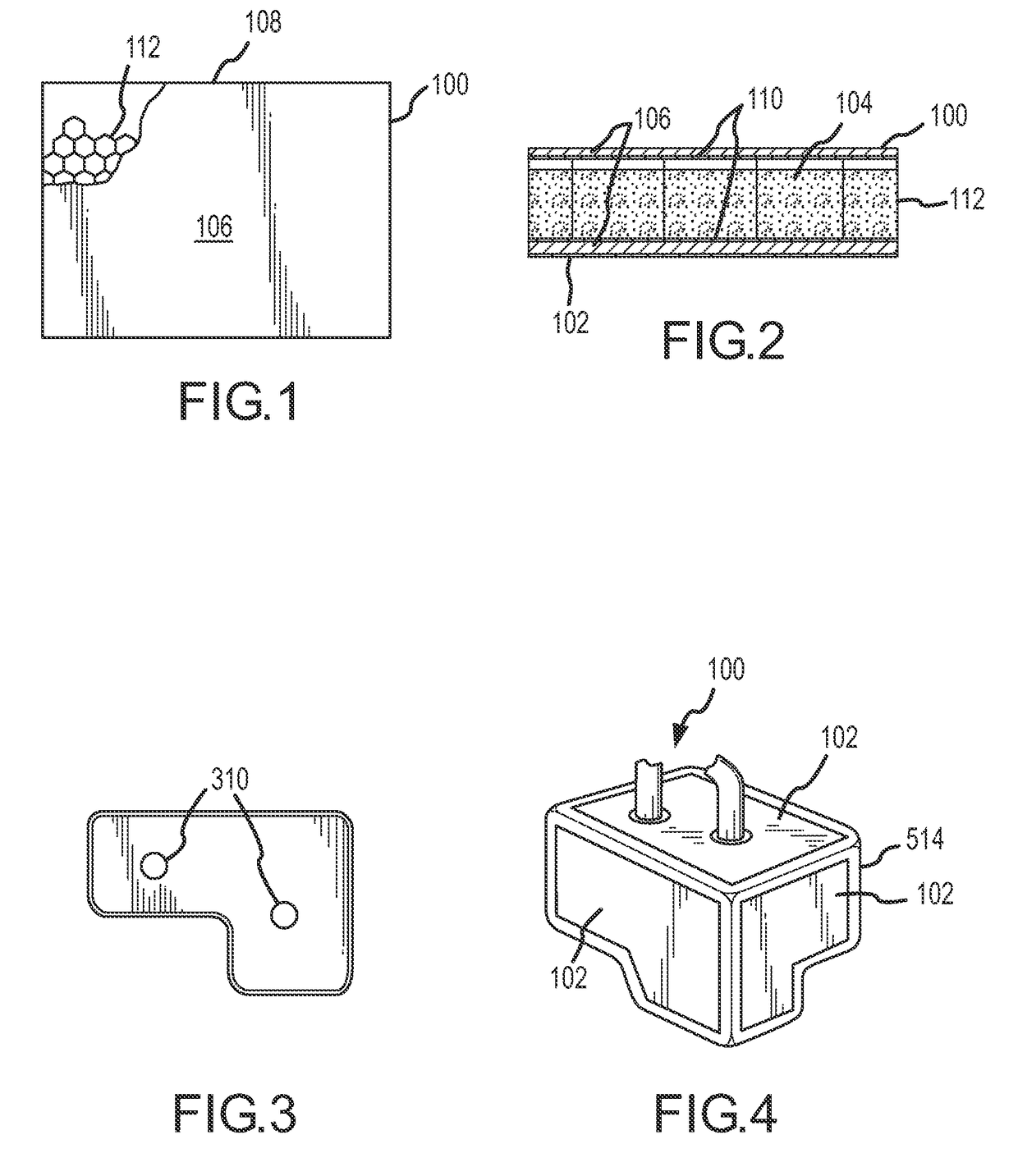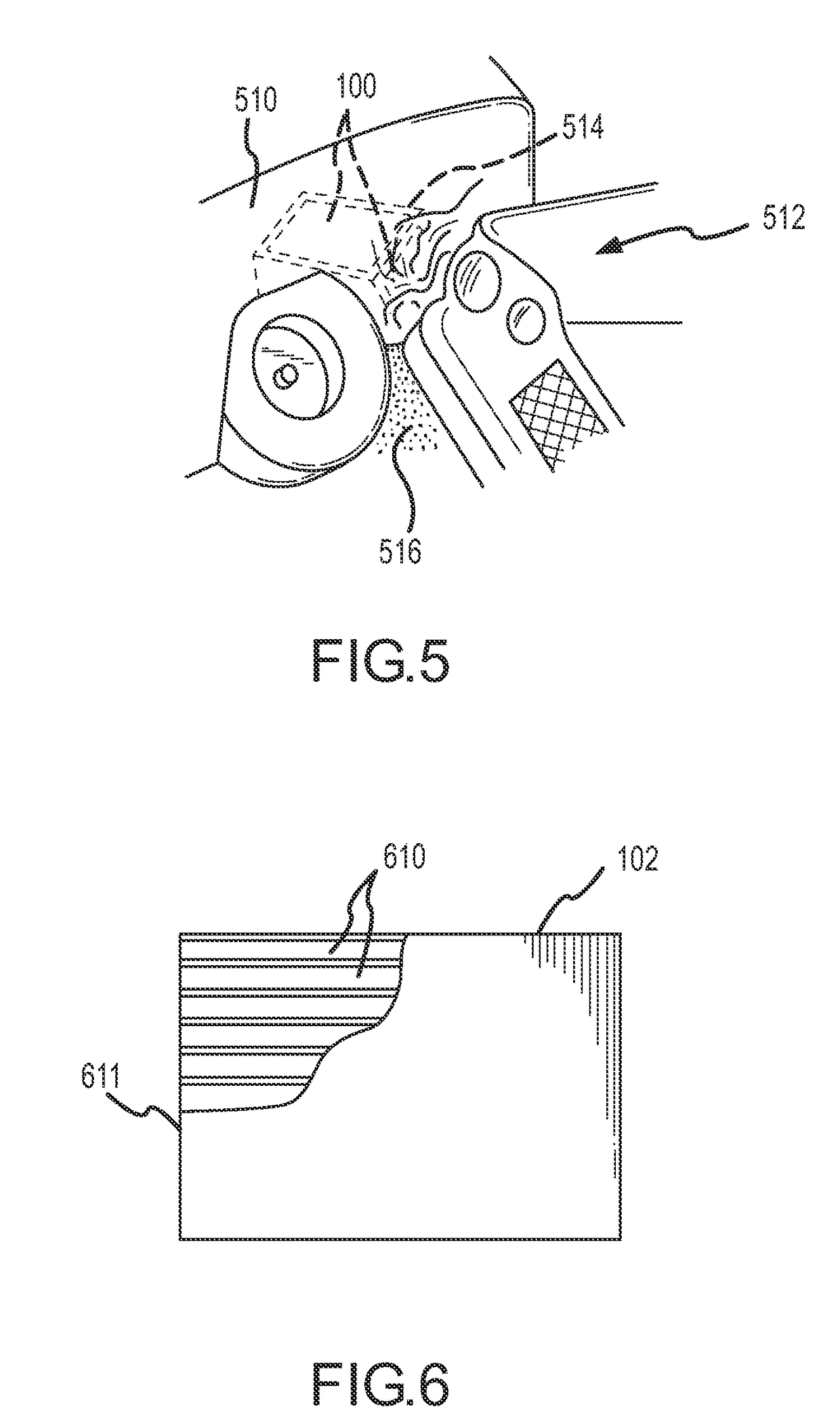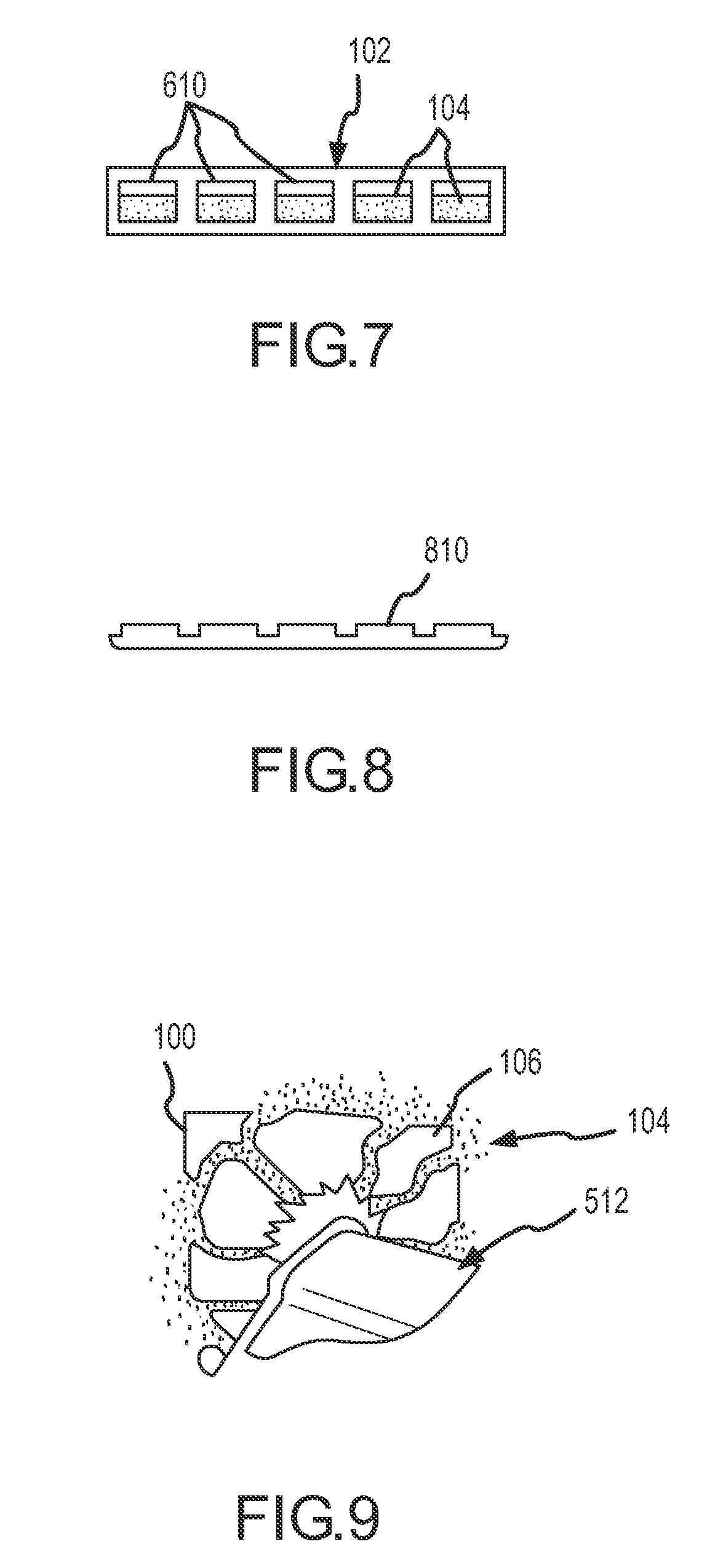Methods and apparatus for controlling hazardous and/or flammable materials
a technology for applied in the field of methods and apparatus for controlling hazardous and/or flammable materials, can solve the problems of only being exposed to the threat of ignition and resultant flame spread, material can injure or kill, and hundreds of thousands of vehicular accidents a year on american highways
- Summary
- Abstract
- Description
- Claims
- Application Information
AI Technical Summary
Problems solved by technology
Method used
Image
Examples
Embodiment Construction
[0043]The present invention is described partly in terms of functional components and various processing steps. Such functional components may be realized by any number of components configured to perform the specified functions and achieve the various results. For example, the present invention may employ various elements, materials, suppressants, neutralizing agents, and the like, which may carry out a variety of functions. In addition, the present invention may be practiced in conjunction with any number of applications, environments, hazardous materials, and trigger events, and the systems described are merely exemplary applications for the invention. Further, the present invention may employ any number of conventional techniques for manufacturing, assembling, mounting, and the like.
[0044]Referring now to FIGS. 1 and 2, a hazard control system 100 for controlling hazardous and / or flammable materials according to various aspects of the present invention may be implemented in conj...
PUM
 Login to View More
Login to View More Abstract
Description
Claims
Application Information
 Login to View More
Login to View More - R&D
- Intellectual Property
- Life Sciences
- Materials
- Tech Scout
- Unparalleled Data Quality
- Higher Quality Content
- 60% Fewer Hallucinations
Browse by: Latest US Patents, China's latest patents, Technical Efficacy Thesaurus, Application Domain, Technology Topic, Popular Technical Reports.
© 2025 PatSnap. All rights reserved.Legal|Privacy policy|Modern Slavery Act Transparency Statement|Sitemap|About US| Contact US: help@patsnap.com



